Pete’s Gear: Fender Stratocasters
Auction news (15 April, 2018): Pieces of a Townshend 1964 Sonic Blue Fender Stratocaster (sn DL24643) smashed on 1 Dec. 1967, at Long Island Arena, Commack, New York, were sold via auction in Dallas, Texas, on 15 April, 2018, via Heritage Auctions, realising US$30,000.
The Who – A Pete Townshend Stage-Used and Smashed 1964 Sonic Blue Fender Stratocaster Guitar from the Band’s December 1, 1967 Concert at Long Island Arena in Commack, NY (1967).
In two separate, smashed and splintered pieces. The serial number — DL24643 — on the neck plate identifies the guitar as a 1964 Fender Sonic Blue guitar. The entire story detailing the night of 12/1/1967, the smashing of the guitar, the catching of the guitar by the owner, and the history of the guitar are in a handwritten statement from the man who has owned this guitar for 50 years now. Accompanied by a handwritten 2 page letter from the original owner, ticket stub from the show, COA from Rock Star Yard Sale, and 2 aluminum engraved plaques suitable for framing. Similar Townshend smashers have sold for as much as $75K and a 1964 Fender alone would cost more than $14,000 to go buy today!
Pete Townshend’s use of Fender Stratocaster guitars on stage from 1966 to 1968.
Pete Townshend’s use of Fender Stratocaster guitars on stage from 1966 to 1968. Pete moved from Rickenbackers to Fender Telecasters for their durability and reparability. He began using Stratocasters for the same reason: they could handle the stage abuse. Moreover, it was Jimi Hendrix’s guitar of choice.
He likely used Fender pure nickel wrap #1500 Spanish Guitar [Smooth Round Wound] (.012, .016, .016, .034, .044, .052) strings on the Stratocasters.
Pete used various guitars through 1967, especially during the U.S. tours, which received equipment sponsorship, but by 1968 had settled on the Stratocaster as the primary guitar. In August 1968, during the U.S. tour, he began occasional use of the Gibson SG Special, and by the end of 1968, had completely switched over to that guitar.
In 1989 he would come back to the Stratocaster with the Fender Eric Clapton model Stratocaster.
Selected quotes
All quotes and references are copyright their original owners and are included for reference only.
Pete, from April 1980 issue of Sound International article, courtesy Joe G’s site.
I stayed with Rickenbackers for a long time and then I started to use Fenders. I never liked Gibsons at all — I still don’t very much (laughs). Then I started to get interested in a wide variety of guitars. … I flitted around a lot and then Hendrix came along and I started to use Strats again. But that didn’t last long because the sound of them wasn’t quite right for what I wanted.
Tom Wright, in Roadwork:
And musicians destroying their instruments? Well, it was outrageous, wasteful. Electric guitars were so expensive, especially American guitars. Fenders — top of the line. I’d heard that when music stores in England learned Pete was busting up guitars, they wouldn’t even sell them to him anymore. Destroying a perfectly useful instrument was sacrilege, plain and simple. To me, it was a brilliant expression of frustration; it took guts.
And actually, it was far from wasteful. Pete was always repairing smashed guitars. There were really only two pieces to a Fender guitar: the main body, which was a big block of alder, and the neck, which was maple with a maple or rosewood fretboard so you wouldn’t get splinters in your fingers. A steel rod ran up the middle of the neck for strength, so if you swung the guitar like a baseball bat at, say, a telephone pole, the neck would break free from the body. If you grasped the guitar by the neck like a butter churn and slammed the base down on a hard floor, it would eventually split like a piece of firewood. All the rest were pieces: the pickups, knobs, strings. Pete learned early on that if you split a solid piece of alder you’d wind up with two pieces that could be joined back together perfectly, not a zillion shards like if you shattered a china plate.
He used an English wood glue that came in a can, a fine white powder he’d mix with water, and he’d paint it onto the two broken edges. He’d join the pieces together with some gaffer’s tape, like a zipper over the crack, and then wrap the whole thing in loops of rubber he’d cut from bicycle inner tubes. the next day, he’d find the body of the guitar stronger than before it was broken. In most cases, the neck had just fallen off, but if the neck was indeed broken, Pete simply replaced it. Since all Fender necks were interchangeable, Pete had boxes of neck, new and repaired, as well as boxes of bodies, extra pickups, and knobs and switches. Each guitar would be smashed multiple times, and when it became clear that the guitars never, ever broke where they’d been glued, the glue manufacturer used that fact as a product endorsement.
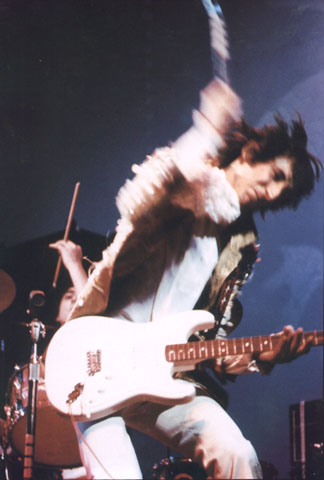
April 1968, Fillmore East.
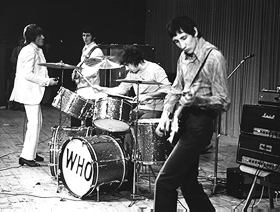
1967
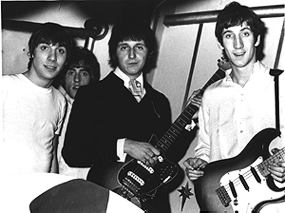
1967
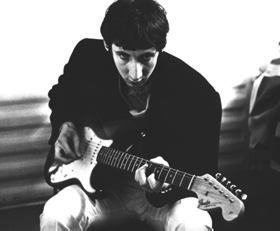
1967
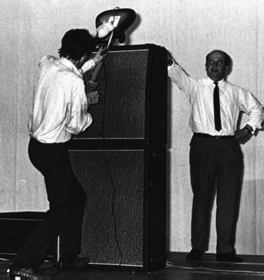
1967, smashing a Stratocaster over a Marshall stack (Marshall 1982A, top, and Marshall 1982B, bottom).
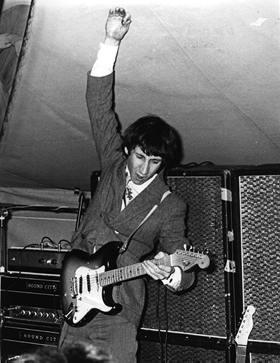
1967, playing through two Sound City L100 amplifiers topped with a Grampian spring reverb unit, driving four Sound City 4×12 cabs.
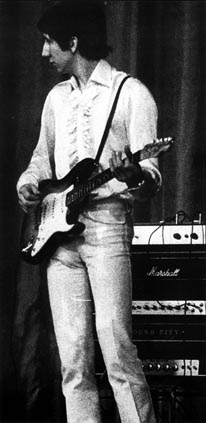
7 May 1967, Kristianstad, Sweden, fitted with a rosewood Telecaster neck. Amps are one 1967 Marshall 1959 Super Lead, and one Sound City L100, topped by a Grampian spring reverb unit.
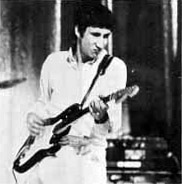
1967
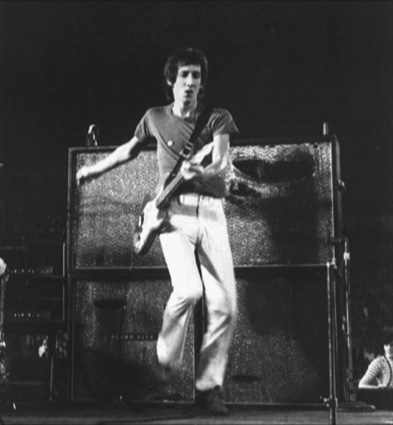
2 Aug. 1968, Singer Bowl, New York, through two Sound City L100 amplifiers, driving four Sound City 4×12 cabs.
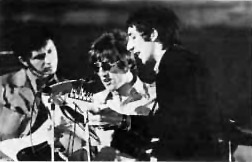
Recording Substitute, 1966.
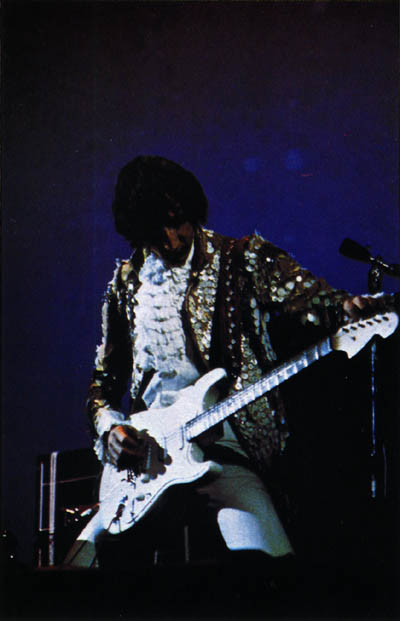
April 1968, Fillmore East
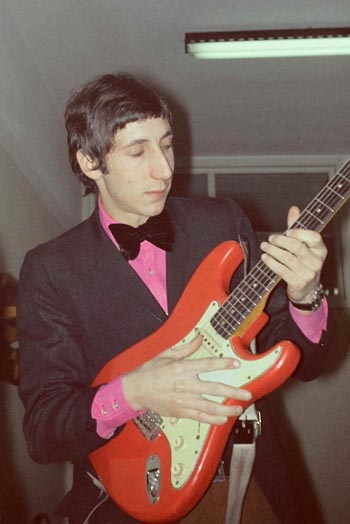
26 February, 1967. Courtesy Brad Rodgers, whocollection.com.
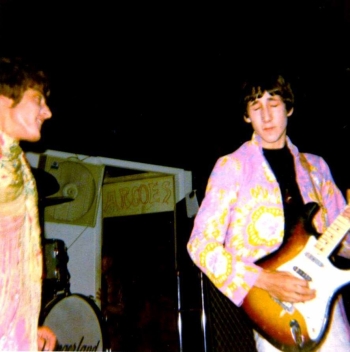
14 June 1967, the Fifth Dimension Club, Ann Arbor, Michigan, with sunburst Fender Stratocaster that would be smashed at Monterey Pop.
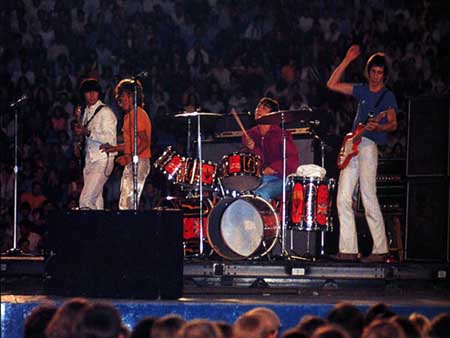
Singer Bowl, New York, August 1968.
Resources and Information
- Story of 1958 Fender Stratocaster owned by Mike Moore, broken by Pete on 15 July, 1968, at the Memorial Centre in Kingston, Ontario. On Joe G’s site: thewho.org/strat.htm
Fender links
- Fender: fender.com
- Vintage Guitars Info: guitarhq.com/fender.html